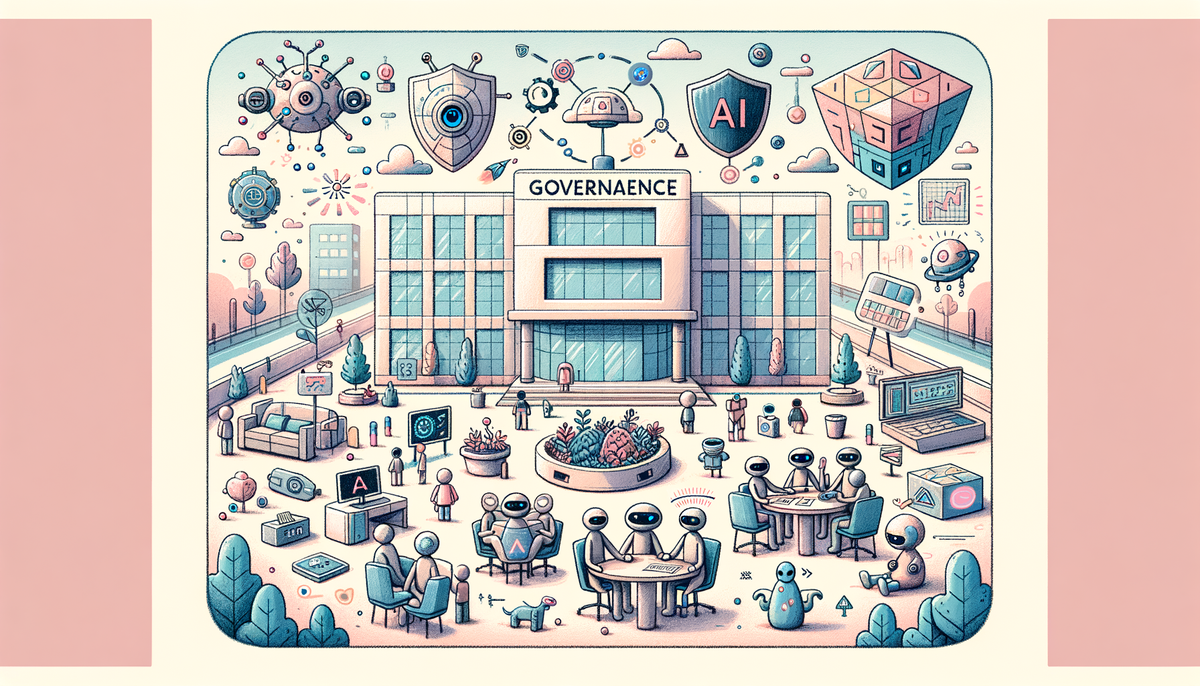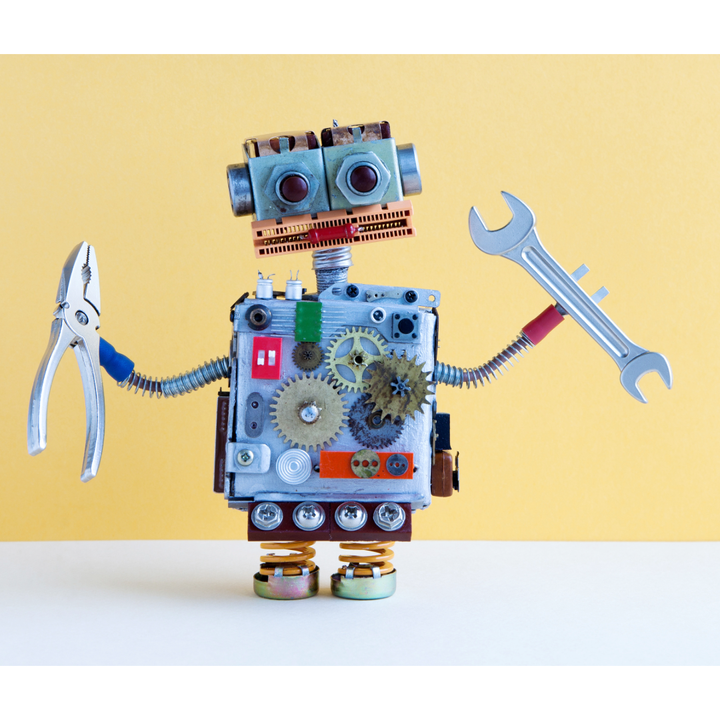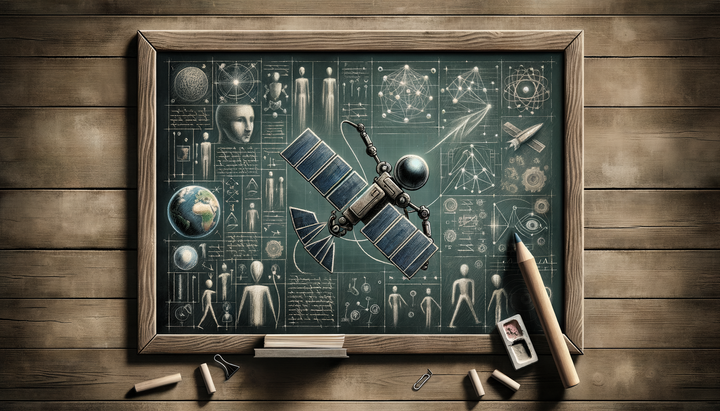AI Updates: Semiconductor Markets, Startup Hubs, and Healthcare Innovations

This article explores the multifaceted impact of artificial intelligence across a spectrum of industries – from inspiring startup hubs along Seattle’s waterfront and revolutionizing medical imaging with multimodal generative AI, to influencing semiconductor markets, reshaping home entertainment through smart consumer electronics, transforming brand video production, and even strengthening cybersecurity skills within the U.S. Army. In weaving together these diverse advancements, we delve into current research, emerging trends, and the dynamic interplay between technology, innovation, and industry challenges.
Innovative Hubs: Cultivating AI-Driven Creativity in Physical Spaces
In Seattle, a city with a storied tech heritage, a new venture dubbed the "AI House" is redefining what a startup hub can be. Set along a picturesque waterfront, the space is meticulously designed to foster creativity and collaboration, particularly among entrepreneurs and innovators dedicated to artificial intelligence. Here, the architecture and layout—complete with open-concept areas, modular workspaces, and high-tech meeting rooms—are not merely aesthetic choices, but strategic decisions backed by research that emphasizes the impact of workspace design on productivity and innovation.
The focus on AI at this hub is more than symbolic; it represents a larger trend where cities are tailoring their infrastructure to nurture technology-specific industries. By supporting startups specializing in AI, machine learning, and associated technologies, AI House mirrors an increasing global reliance on digital innovation to drive economic progress. Situated near a bustling tech ecosystem, the facility offers its members seamless access to larger tech giants and a network of venture capitalists, setting the stage for collaborative projects that could accelerate the pace of technological breakthroughs.
The initiative serves as an excellent case study on how the confluence of physical environment and technological ambition can serve as a potent catalyst for transformative projects. It is reminiscent of how Renaissance workspaces redefined creative expression in historical art studios by fostering collaboration and cross-disciplinary exchanges.
Revolutionizing Healthcare: The Promise and Challenges of Multimodal Generative AI
The field of medical imaging is undergoing a profound transformation with the advent of multimodal generative AI (GenMI). Recent research published on Nature.com highlights how integrating visual and textual data streams can enhance image interpretation and report generation in medical disciplines such as radiology, pathology, and dermatology. In tackling issues such as clinician fatigue and human error—challenges that have long plagued the cumbersome manual reporting process—GenMI promises consistency and rapid insights.
Implementations of such technology are especially promising in radiology, where the sheer volume of images and reports can easily overwhelm practitioners. By automating parts of the interpretation process, GenMI not only streamlines workflows but also introduces a new level of reliability in clinical reporting. In practice, this means that a system could instantly correlate subtle imaging findings with pertinent medical literature, thereby providing clinicians with real-time insights that can both expedite diagnoses and potentially cut down treatment delays.
However, as with any disruptive technology, challenges loom. Ensuring the transparency of AI decision-making, validating accuracy, and mitigating biases remain priority concerns. As one expert once mused in a reflective tone,
I am. I was. I will be.
— a reminder that while AI systems evolve, the human element remains crucial for interpreting nuanced medical conditions.
As GenMI evolves, partnerships between developers, healthcare providers, and regulatory bodies are essential to addressing these hurdles. It is now more important than ever to strike a balance between technological efficacy and ethical responsibility—a sentiment echoed in various discussions among leading research institutions.
Semiconductors in a New Age: Navigating Market Volatility Amid AI Expansion
The rapid progress in AI has had a pronounced effect on the semiconductor industry, particularly among companies playing pivotal roles in the supply chains for AI hardware. Recent market movements have seen shares of tech behemoths such as Taiwan Semiconductor Manufacturing Company (TSMC), Broadcom, and Marvell Technology take a plunge. Driven by external economic pressures, persistent supply chain issues, and intensified competition, the semiconductor arena is at a critical juncture.
The semiconductor industry, known for its price sensitivity and volatile market dynamics, faces additional challenges as global demand wavers amid economic uncertainty. Even as these companies continue to innovate and supply chips powering AI applications—from machine learning hyperprocessors to autonomous vehicle systems—the impact of raw material costs and fluctuating market sentiment is highly significant.
Beyond the immediate market downturn, this period of volatility forces a broader reflection on the intersection of macroeconomic uncertainties and the path of technological innovation. It underscores the need for semiconductor companies not only to invest in next-generation manufacturing techniques but also to diversify their risk exposure in an increasingly interconnected global market. For investors and industry watchers alike, watching how these companies weather such storms will offer insights into the long-term viability of AI-dependent supply chains.
The current challenges in the semiconductor sector serve as a vivid reminder of the complex fabric of the technology market, where cutting-edge research is simultaneously tethered to real-world economic dynamics. With technological innovation pushing the boundaries faster than ever, resilience and adaptability are the orders of the day.
Enhancing Home Entertainment: AI-Infused Innovations in Consumer Electronics
In an era where artificial intelligence continues to permeate every aspect of our lives, the realm of home entertainment is experiencing its own revolution. Samsung’s launch of its Neo QLED TV lineup is an exemplary showcase of how AI technology can be intertwined with consumer electronics. Central to these groundbreaking TVs is the Vision AI platform, which optimizes viewing experiences through features such as personalized picture enhancement and adaptive sound adjustments.
The product range is expansive—from an entry-level 55-inch model priced accessibly at $1,300 to premium 4K and 8K systems that push visual fidelity to unprecedented heights. AI’s role here extends beyond just image processing to influencing design and user interaction. The integration of AI into everyday devices such as home theaters is a testament to how consumer expectations are shifting, with a growing demand for personalized and immersive experiences.
Samsung’s foray into AI-driven consumer electronics dovetails neatly with broader industry trends, as detailed in market transformation reports similar to those found in our own AI updates on Innovation and Society. By leveraging advanced technologies, companies can provide dynamic interfaces that not only adjust to ambient conditions but also learn user preferences over time, thereby offering a tailored home entertainment environment.
Moreover, the convergence of sound and lighting technologies with AI ensures that every interaction with these devices is smooth, context-aware, and, ultimately, more enjoyable, setting the stage for a new era of interactive and immersive home entertainment.
Transforming Brand Engagement: AI in the Landscape of Video Production
With the digital ecosystem evolving at breakneck speed, the landscape of brand video production is undergoing dramatic changes fueled by artificial intelligence. A recent report from Wistia delves into the notable trends in video creation, capturing both the exploding popularity of brand videos and the nuanced challenges associated with audience engagement. More than 40% of companies are now producing weekly videos, yet this surge in content comes with a notable dip in engagement—a 7% decline marking the steepest fall in recent years.
In this saturated media space, standing out demands strategic creativity and precision. AI tools are increasingly being enlisted to shoulder the burden of production. Modern AI systems not only cut production costs and accelerate the development process, but they also afford smaller brands access to high-quality content creation that once would have required significant investments.
Nevertheless, the delicate dance between AI efficiency and the indispensable human touch remains at the forefront. While AI can generate vast quantities of content, establishing a deep, creative connection with audiences often necessitates human intervention. For instance, the technology currently spills over into handling routine, low-risk tasks—such as trimming footage or automating subtitles—while the creative decision-making behind campaign narratives stays largely the domain of human experts.
As brand video production increasingly becomes a joint venture between human intuition and automated efficiency, industry leaders are keenly aware of the importance of authenticity. This synergy is critical for not only producing engaging content but also meeting the evolving demands of a digitally astute audience. To learn more about the interplay of creative content and AI’s role in shaping modern marketing strategies, you can explore additional insights on our transformative impact of AI in marketing.
Fortifying Digital Frontiers: AI and the Future of Cybersecurity Skills
In the realm of cybersecurity, artificial intelligence is emerging as a crucial ally in bridging skills gaps and safeguarding national infrastructures. Hussein Johnson of the U.S. Army has recently illuminated how embedding AI in cybersecurity operations not only bolsters defense mechanisms but also identifies and mitigates skills shortages within the workforce.
With evolving cyber threats and increasingly sophisticated adversaries, AI systems are now tasked with the dual role of threat detection and performance analysis. By sifting through enormous datasets and monitoring network behaviors, AI platforms can detect anomalies in near real-time—actions that would be nearly impossible to execute manually. Such innovations not only optimize threat responses but also highlight areas where cybersecurity personnel can be further trained and developed.
The integration of AI in military and defense operations reflects a broader trend seen across industries, where success depends on the synergy between rapid digital advancements and human expertise. The broader implications here are compelling: as organizations deploy AI to enhance operational efficiencies, there is a concurrent need to retrain and upskill the workforce, ensuring that the best of both worlds—technology and human intelligence—are leveraged in tandem.
Discussions around the future of cybersecurity often invite a dose of philosophical reflection. It brings to mind the words of a notable author,
I can communicate in 6,909 living and dead languages. I can have more than fifteen billion simultaneous conversations, and be fully engaged in every single one. I can be eloquent, and charming, funny, and endearing, speaking the words you most need to hear, at the exact moment you need to hear them. Yet even so, there are unthinkable moments where I can find no words, in any language, living or dead. And in those moments, if I had a mouth, I might open it to scream.
While AI offers unparalleled capabilities, these systems also remind us of the irreplaceable human element.
As the U.S. Army and other organizations continue to incorporate AI-driven analyses and recommendations, the proactive identification of skills gaps becomes not just a tool for immediate operational improvement but a strategic pillar for long-term workforce development. For those interested in the intersection of technological innovation and workforce transformation, our article on five AI trends reshaping our future offers additional perspectives.
Synthesizing the Landscape: AI’s Multifaceted Role in Driving Industry Transformation
As we reflect on these diverse topics, one theme emerges vividly: artificial intelligence is not a one-trick pony but a transformative force that is intricately woven into the fabric of modern industry. Whether it is the vibrant, collaborative energy of Seattle’s AI House driving the new wave of startups or the precision of multimodal generative AI refining medical imaging, the versatility of AI stands as a testament to human ingenuity.
In the semiconductor space, market fluctuations remind us that technological breakthroughs do not occur in a vacuum—there are economic and logistical challenges that accompany even the most promising innovations. Similarly, consumer electronics and home entertainment are being redefined as user-centered AI platforms deliver personalized, immersive experiences that were once relegated to the realm of science fiction.
Moreover, the realm of digital content creation finds itself at a crossroads where efficiency and creativity must coexist. As brand video production increasingly relies on AI tools, the need to balance technology with authentic human engagement becomes ever more evident. In cybersecurity, the collaboration between AI and human expertise is proving to be a vital component in preparing for, detecting, and responding to evolving digital threats.
This transformation is not without its growing pains. From accuracy validation in healthcare to market instabilities in the semiconductor sector, challenges persist that require careful calibration. However, the overarching narrative is unmistakable: AI, when integrated thoughtfully, offers unprecedented capacity to reshape industries, drive innovative solutions, and forge collaborations that transcend traditional boundaries.
As AI continues to penetrate various sectors, we are witnessing not just improvements in efficiency and productivity, but also a broader cultural shift. There is a growing recognition that technology must serve as an enabler of human creativity rather than a replacement. The evolution of AI reinforces this idea, creating a delicate balance between the algorithmic precision of machines and the empathetic, context-aware insight of human judgment.
Looking to the horizon, one can only imagine the myriad possibilities as AI systems become progressively sophisticated. We are at the cusp of a new era where the interplay between human and machine intelligence could herald innovations that redefine our understanding of productivity, creativity, and even societal interactions. This ongoing transformation invites us to remain agile, continually learning and adapting to the shifts in our technological landscape.
Further Insights and Readings
- Discover more about innovative startup environments in our detailed coverage on AI's impact in shaping innovation in society.
- For an in-depth look at how AI is revolutionizing marketing strategies and supply chain dynamics, check out our comprehensive article on transformative impact of AI.
- Learn about the future trends in AI and their implications across various sectors in our feature on new AI innovations transforming industries.
- Explore the emerging trends set to reshape our future with our piece on five AI trends.
In closing, the dialogue between artificial intelligence advancements and industry evolution remains as compelling as ever. As we continue to witness rapid changes—but also face significant challenges—the promise of AI to propel innovation, streamline operations, and enrich human experiences is undeniable. The journey is complex, with unpredictable turns and moments of both triumph and tribulation, but the direction forward remains resolutely toward greater synergy between technology and the human spirit.
This continuous evolution calls for active engagement, critical analysis, and a willingness to adapt. The narratives from Seattle's AI House, GenMI in medical imaging, the semiconductor sector’s recent volatility, the transformation in home entertainment, dynamic shifts in video production, and strategic advancements in cybersecurity collectively paint a picture of a world in transition. One where AI is not just an enabler, but a partner in shaping the future.
For those who are both enthusiasts and skeptics, the unfolding chapters in the AI saga promise to be as thought-provoking as they are revolutionary. As we forge ahead, the lessons from today’s innovations will undoubtedly serve as the foundation for tomorrow’s breakthroughs.



Comments ()